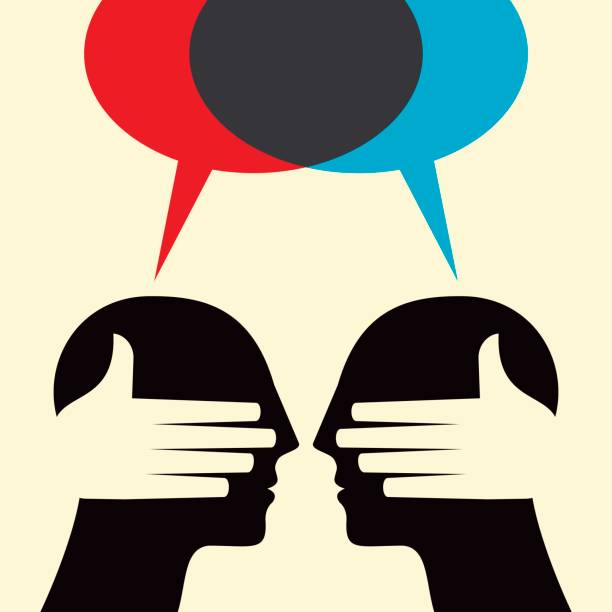The world often sees conflict through the lens of force. We focus on armies, borders, and political power plays. Yet, the most profound changes often begin in a much quieter space. They start with a conversation. Dialogue is the simple, yet profound, act of talking and listening. It is a powerful alternative to violence. It is not just idle chatter. Instead, it is a practical tool for de-escalating conflicts. It helps build lasting peace. This process works at every level of society. From a heated family dispute to complex international negotiations, dialogue is the essential first step toward a peaceful resolution. It provides a bridge between two opposing shores.
Psychology of Dialogue: Building Bridges, Not Walls
Dialogue’s power lies in its ability to transform perception. It forces individuals to move beyond their own viewpoints. They must listen to and understand different perspectives. This act is profoundly humanizing. It breaks down stereotypes. It dismantles the rigid “us versus them” mentality. When we sit down and talk, we see the person behind the ideology. We discover shared fears and common hopes. Dialogue provides a safe space for airing grievances. It allows people to express frustration without resorting to violence. This simple act can prevent a small spark from becoming a raging inferno. It works because it addresses the root causes of conflict. It acknowledges pain and validates feelings. This is especially true in communities marked by deep divisions. Consider, for instance, the crucial role of Interfaith dialogue for peace in bridging divides. By creating a platform for leaders and followers of different religions to meet and discuss their shared values, this type of conversation can dispel dangerous misconceptions. It shows that faith, often seen as a source of conflict, can actually be a powerful force for unity and understanding. Dialogue reveals our common humanity. It allows empathy to flourish where anger once grew. It builds a foundation of trust. This trust is the bedrock of any lasting peace.
Dialogue in Action: From Local to Global
Dialogue is not just a theoretical concept. It is a practical tool. Its effectiveness can be seen at all scales. On a micro-level, dialogue resolves daily disputes. It can mend a broken friendship. It can heal a family rift. For example, a community mediation program can help neighbors solve a dispute over property lines. It does this without the need for legal battles. It encourages them to talk it out. This allows for a mutually agreeable solution. At a macro-level, dialogue is the engine of international diplomacy. Peace talks and diplomatic negotiations are essential for resolving conflicts between nations. The historic Camp David Accords are a prime example. In 1978, dialogue brought together leaders from Egypt and Israel. It led to a landmark peace treaty. This was a direct result of conversation. It shows that dialogue, even between long-standing enemies, can lead to monumental breakthroughs. In a globalized world, countries are more interconnected than ever. This makes conversation even more vital. It allows for a continuous exchange of ideas. It prevents misunderstandings from escalating. It fosters cooperation on global issues. Dialogue is the language of diplomacy. It is the lifeblood of international relations. It is the opposite of isolation. It is the cornerstone of peace-building.
Challenges and Solutions: Navigating the Difficult Path
Dialogue is not easy. It faces many challenges. Past conflicts create deep mistrust. Power imbalances can make honest communication difficult. Emotional wounds often run deep. It is hard to sit across from someone who has caused great harm. These obstacles are real. They must be acknowledged. Yet, they are not insurmountable. The key to overcoming these barriers is a commitment to the process. Impartial third-party mediators can be a solution. They provide a neutral space. They ensure a fair and respectful exchange. Confidence-building measures can also help. Small, low-risk conversations can build trust. They can pave the way for bigger, more difficult topics. Patience and persistence are also essential. Dialogue is not a quick fix. It is a long-term commitment. It requires a willingness to sit with discomfort. It demands a belief in the process. We must be patient with each other. We must be persistent in our efforts. The rewards are worth the struggle.
Conclusion
In a world full of noise and division, dialogue is a beacon of hope. It is a fundamental skill for individuals and nations alike. It is the foundation of peaceful coexistence. It is not an alternative to action. Rather, it is the most effective form of action. It allows us to understand, to empathize, and to find common ground. By choosing conversation over confrontation, we choose a better path. We choose to build a world based on mutual respect. We choose to create a future where peace is not a distant dream, but a lived reality. This commitment to dialogue is a promise. It is a promise to future generations. We will solve our problems with words, not weapons. We will build a world where every voice is heard. We will create a lasting peace, one conversation at a time.


